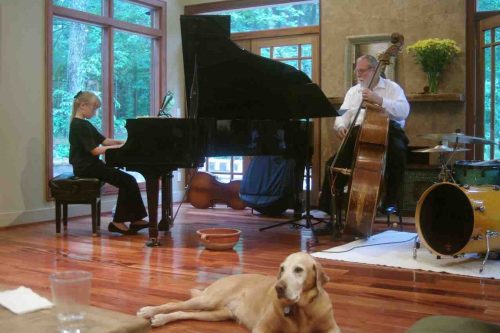The new possibilities are opened by physical simulation of musical instruments.
The idea is to enrich music that is produced by computer to sound more like a real instrument. The goal is not to eliminate a human player, but to make playing easier. For example children can play trumpet or clarinet by touching keyboard or drum or a simple wind controller . This would allow them to focus on rhythm and volume rather than sound production. This is not to substitute for learning mastery of instrument but to be able to create a collaborative youth ensemble experience. Kids could be given ability to generate sounds limited in pitch to a composition in a given scale. The conductor could control some parameters of the score, while the performers could control rhythm, volume and some element of expression. This is similar to a drum circle but with more possibilities.
Violin is infinitely harder to play than keyboard. For that reason strings orchestras sound rather terrible until middle school. This decade will open frontier of new possibilities where traditional orchestra programs can be introduced earlier with simpler instruments that can give children and adults more rhymical training and confidence and be pleasant to the audience.
Interaction of algorithm (to refrain from AI) to guide an interaction between human and instrument has been used by musicians in the past (loppers etc.) but now it can be present at different scale- and new professions will emerge in instrumentation and development of human-sound interfaces.
